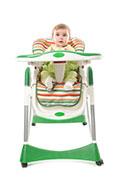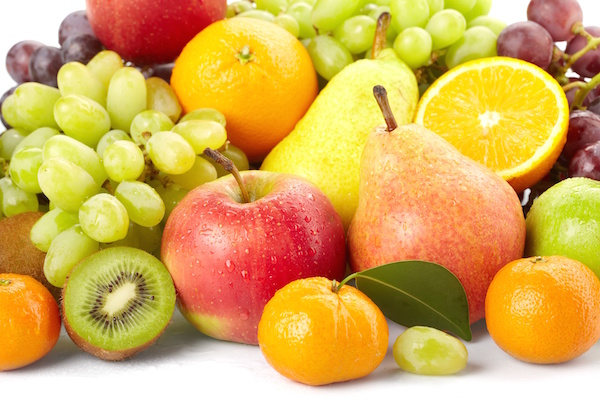
MONDAY, Feb. 2, 2015 (HealthDay News) — Many prepackaged dinners for toddlers contain high amounts of salt, and many toddler and infant snacks, desserts and juices contain added sugar, a new study found.
“It was surprising that more than seven of 10 packaged toddler meals contained too much sodium (salt),” said study leader Mary Cogswell, a researcher at the U.S. Centers for Disease Control and Prevention. “In addition, a substantial proportion of toddler food, and infant and toddler snacks — even those we don’t think of as sweet, like toddler meals and salty snacks — contained at least one added sugar.”
The good news, she said, was that most commercial infant foods were low in salt and did not contain added sugar.
Cogswell and other researchers tallied up the total sugar and salt in more than 1,000 U.S. infant and toddler foods found in major grocery stores in 2012. The infant foods were for children aged 4 to 12 months; the toddler foods were for children 1 to 3 years old.
The 657 infant foods included dinners, vegetables, fruits, dry cereals and ready-to-serve mixed grains. All but two of these were low in sodium, defined as less than 140 milligrams (mg) per typical serving.
Most infant food was also free of added sugars — except the infant mixed grains and fruits, about half of which had added sugar and more than a third of total calories from sugar. A typical serving of these, on average, contained 10 grams (g) of sugar.
But the 72 toddler dinners the researchers looked at were a different story: A third of them had added sugar, and more than seven in 10 of them were high in salt, defined as more than 210 mg per typical serving.
Further, most of the snacks, desserts and juices for both infants and toddlers tended to contain added sugar. Sugar made up more than a third of total calories for nearly 90 percent of dry fruit-based snacks.
“Some parents might be surprised that a majority of infant and toddler snacks and sides, such as flavored crackers and rice cakes, contained added sugar,” Cogswell said. “About half the analyzed ready-to-serve mixed grains and fruits products, such as oatmeal and fruit in a jar, contained added sugar.”
The findings were published online Feb. 2 in the journal Pediatrics.
The trade group the Grocery Manufacturers of America said in a statement that the study “does not accurately reflect the wide range of healthy choices available in today’s marketplace… because it is based on 2012 data that does not reflect new products with reduced sodium levels.”
The Institute of Medicine recommends that children ages 1 to 3 years consume no more than 1,500 mg of salt a day. But 79 percent of children in this age group exceed that limit, putting them at greater risk for high blood pressure in later childhood and adulthood, the study authors noted.
Further, an estimated quarter of U.S. children aged 2 to 5 years are overweight or obese, which increases the risk of type 2 diabetes and other health conditions. Federal guidelines recommend that no more than 5 percent to 15 percent of total daily calories come from added sugar, and U.S. children aged 2 to 5 years average about 13 percent, according to background information in the study.
“A significant amount of evidence shows that one of the strongest predictors of what children eat later in life can be what they eat at a young age,” Cogswell said. “A poor diet in childhood can lay a foundation for future health problems such as obesity and cardiovascular disease, so it’s important to try to instill healthy eating habits early.”
Parents can do a lot to instill those habits, Cogswell said. She suggested repeatedly offering infants and toddlers foods that are naturally low in salt and added sugars, as well as fruits and vegetables without added sugar, salt or sauces, as often as possible.
When shopping, parents can look for foods labeled “low sodium,” which can only legally be used on products with less than 140 mg per serving, or labeled “no salt” or “no added sugar.” New federal nutrition labeling guidelines set to take effect within the next year will also require products with added sugar to say as much on the label, she said.
However, parents must still be wary about the “no added sugar” claim or mention of “equivalent number of fruit servings” when it comes to some fruit-containing products, cautioned Dr. Yoni Freedhoff, an assistant professor of family medicine at the University of Ottawa in Canada, and an obesity specialist.
“There are no equivalents to fruits other than actual fruits, and if a label needs to brag about sugar not being added, it often means that manufacturers have used fruit concentrates to spike their products with huge amounts of sugar,” Freedhoff said. “I’ve seen fruit bars and snacks with more sugar than chocolate bars, where, by weight on a scale, 80 percent of them are pure sugar.”
He suggested that labels sounding too good to be true are also a red flag.
“The easiest and saddest rule of thumb is that the harder a product’s packaging tries to convince you its contents are healthful, the more important it is to turn the product around and take a moment to consider the nutrition facts panel and ingredients to determine if the claims are justified,” Freedhoff said.
One quick way to assess a nutrition label is to look to see if sugar or salt are listed in the top five ingredients, said Kristi King, senior dietitian at Texas Children’s Hospital in Houston. In addition to sugar and corn syrup, parents can look for honey, fructose, malt, maltose, molasses, dextrose, glucose, lactose, sucrose, turbinado and trehalose among the ingredients.
“Food labels can get very tricky and overwhelming,” King said. “A general rule of thumb is that 4 grams of sugar equals one teaspoon. Knowing this information can quickly help parents calculate how many teaspoons of sugar their child would be consuming.”
King also recommended not adding salt to foods at the table or while cooking, not adding sugar to cereals or fruits, and offering children a variety of food types and colors to ensure they get a variety of nutrients. “You can use some of the prepackaged convenience foods, but these should not be the base of the diet,” King said.
Even though preparing food at home takes time, it need not be gourmet and will generally be healthier, Freedhoff said.
“I’d recommend a sandwich over a prepackaged kid lunch product any day of the week,” he said. “This study suggests that from the age of toddlerhood onward, we’re building kids out of sugar and salt, not exactly the highest quality building materials around.”
More information
Visit the U.S. National Library of Medicine for more on childhood nutrition.
Copyright © 2025 HealthDay. All rights reserved.

